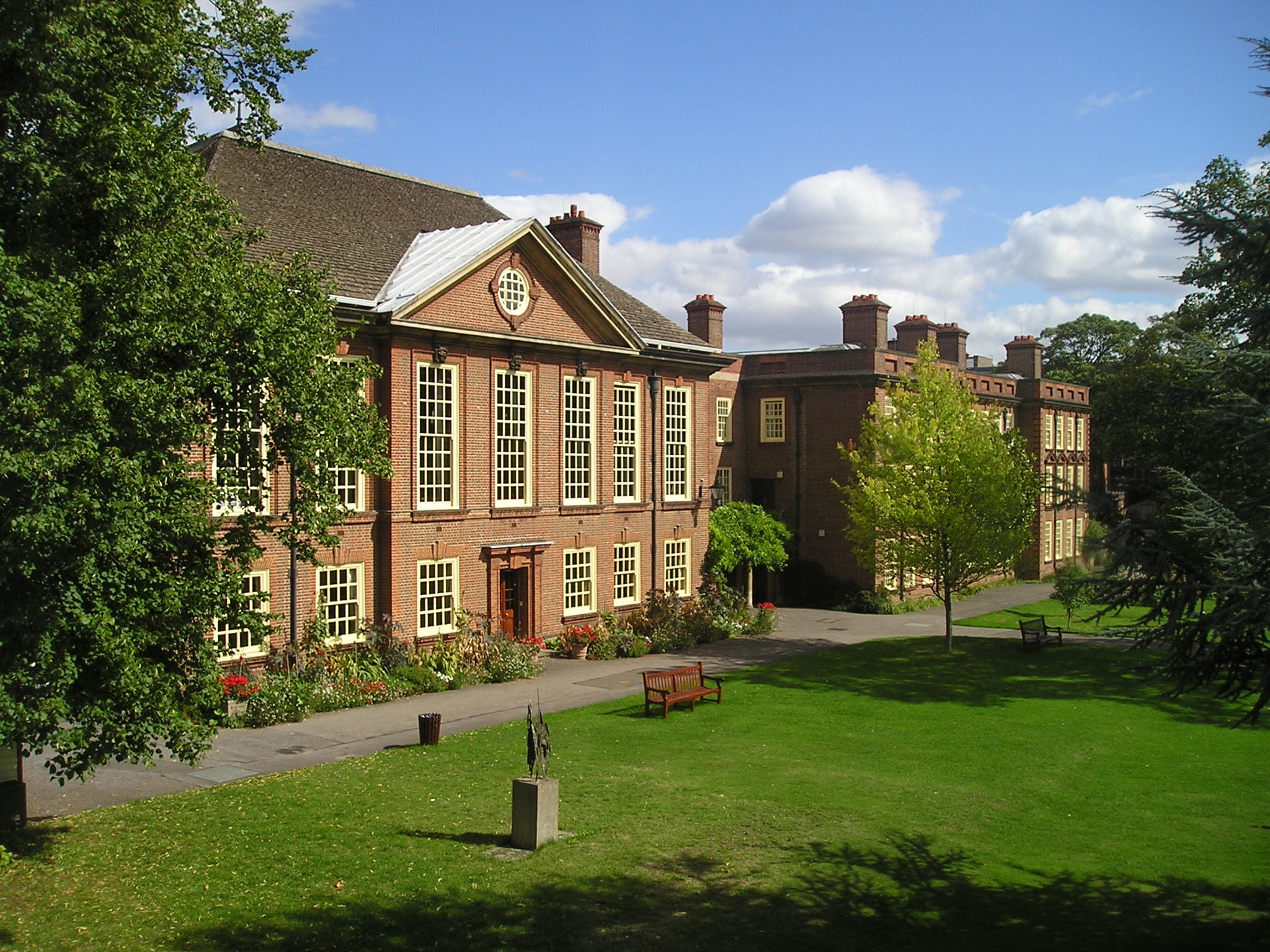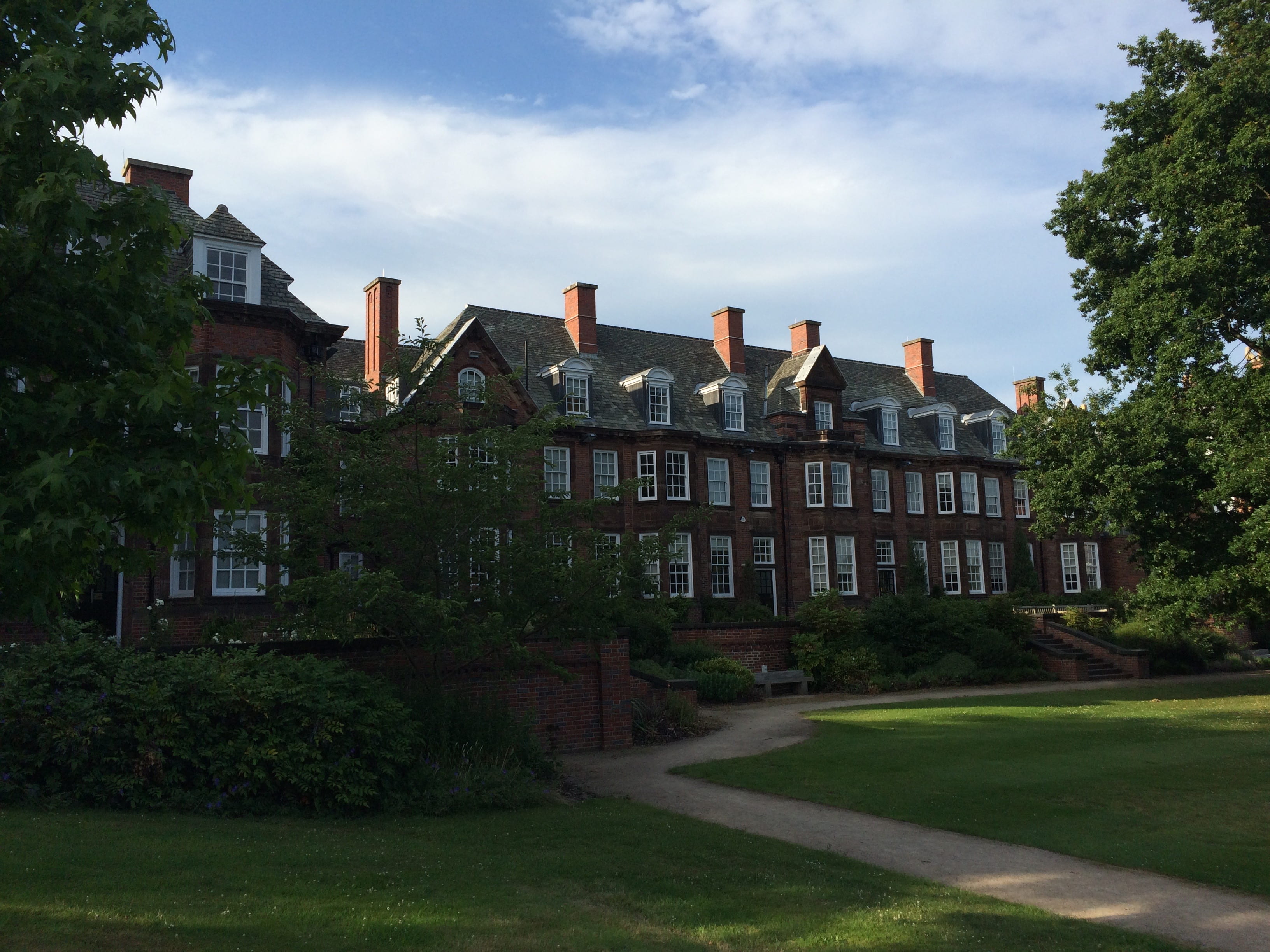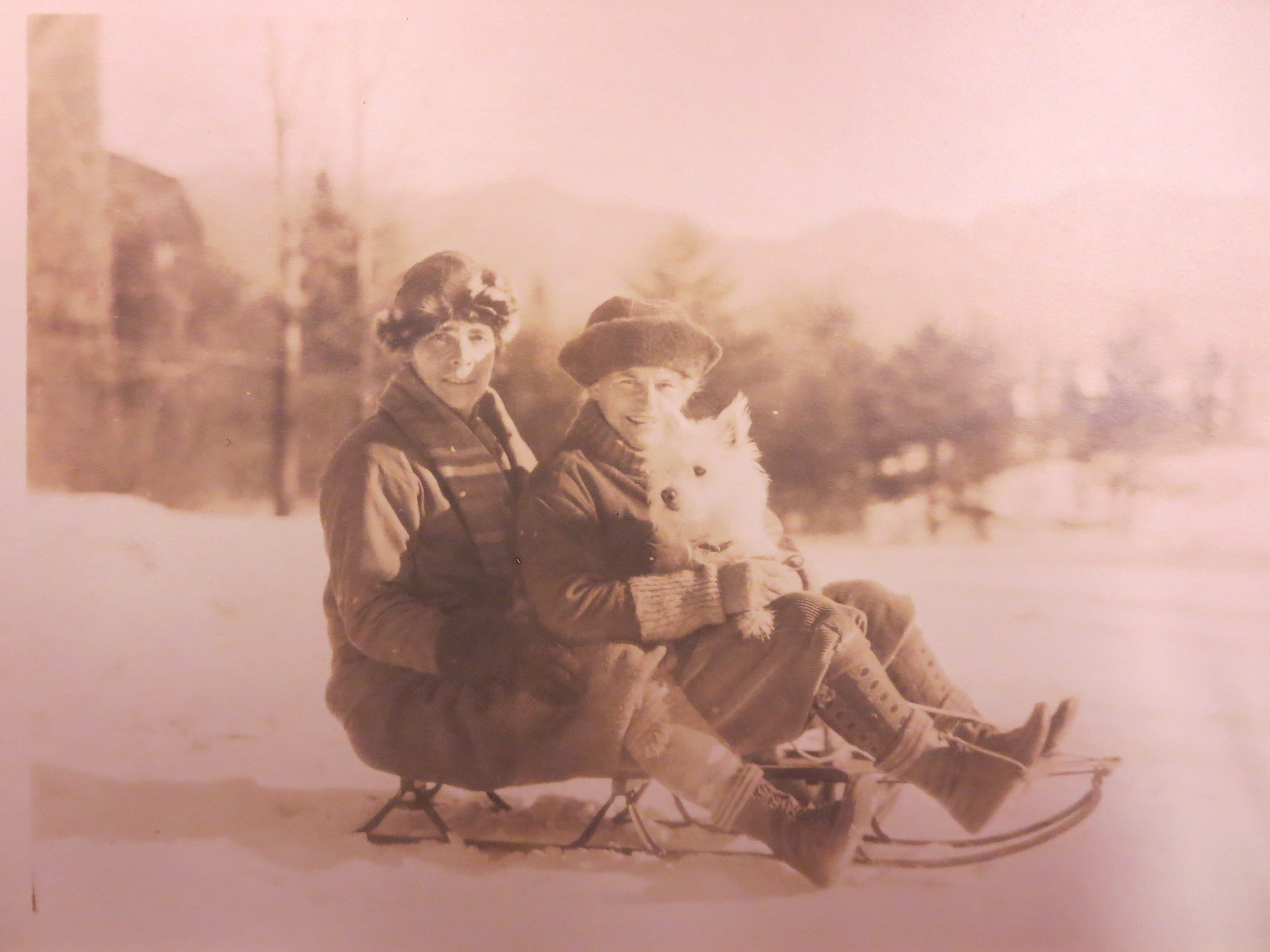by Emily Rutherford
Working my way through my most recent archival findings, it’s tempting to conclude that, in early-twentieth-century England, men’s visions for the future of higher education revolved entirely around conservative retrenchment, while women’s embraced exciting new progressive ideas including coeducation, curricular innovation, and education’s relation to international relations. To be sure, my sample size is small, my research as yet inconclusive; previous historians have done much to trace the transformation of liberally- and Liberally-minded academics in my period into public intellectuals who pronounced on everything from social reform and imperial policy to the League of Nations.
Still, while schoolmaster-turned-Cambridge don Oscar Browning or American art collector-turned-Oxford benefactor Edward Perry Warren were working hard to defend the distinctly cloistered, masculine culture of the Oxbridge collegiate system, women’s educational community had grander and more outward-looking aims. Their vision marked a significant departure from that of men who, in the second half of the nineteenth century, had sought to use the residential college model and a broadly classical curriculum to inculcate morality and civic duty in their students. However idealistic some of these men might have been, their visions usually turned inward. By contrast, in a 1922 speech, the London English professor Caroline Spurgeon argued that an organization connecting university-educated women from around the world might prove a more successful vehicle for “international friendship” than the League of Nations (Caroline Spurgeon Papers, Royal Holloway PP7/6/3). I want briefly to tell the story of Spurgeon and some of the friends with whom she came to hold this belief—and to suggest, perhaps, a different account of early-twentieth-century elite higher education in Britain from the perspective that the Oxbridge men’s colleges offer.
Caroline Spurgeon, the daughter of an army captain, was born in India in 1869, and later went to Cheltenham Ladies’ College and King’s College London. She received a doctorate in medieval literature from the Sorbonne in 1911. Margery Fry, born into a prominent Quaker family in 1874, read mathematics at Somerville College, Oxford. Rose Sidgwick, born in 1877, was the daughter of a prominent progressive Oxford don; she attended Oxford High School for Girls and read history as an Oxford Home Student. Virginia Gildersleeve was also born in 1877, into a prominent New York family; she attended Brearley and Barnard, and did a Ph.D. in comparative literature at Columbia. All four were “new” women: a generation who came of age in the 1890s, the first women for whom education opened doors to an independent, public life that would have been inconceivable to their mothers. They were committed to their fields of research, and to building institutions that could offer to women what university education had long offered to men—whether that meant residential colleges to rival Oxbridge and the Ivy League, or large coeducational institutions committed to offering a higher education in a wider variety of fields to anyone capable of doing the work.
For all this progress, most women who pursued a professional career were thereby making the choice not to marry. In her volume on women in British universities in this period, Carol Dyhouse offers the remarkable statistic that 79-85% of women academics at the turn of the century “remained lifelong spinsters” (161). Instead, women who worked in universities—like those in other professions, like social work, newly open to women—were emotionally sustained by the close friendships they formed with each other. Rose Sidgwick and Margery Fry are a typical example: they met when teaching at Somerville College, Oxford early in their careers and became committed partners, moving together to Birmingham University in 1904 to start a residence hall for women there. While we can’t, and shouldn’t, speculate about whether a relationship like Fry’s and Sidgwick’s might have looked like what we would call “lesbian” today, the collection of Sidgwick’s letters and poems that Fry saved are a testament to the two women’s intimacy; ardent expressions of love from the 1900s give way to anxiety after Fry decided to join the Quaker ambulance corps on the Western Front in 1915. It’s difficult to do justice to this extraordinary collection of documents here. But through them it may be possible to tell a detailed and difficult story about the ways in which “new women” intermingled love and labor—of the kind which Seth Koven has begun to explore and which could benefit from more perspectives and forms of evidence.
As the higher education sector expanded, it became an important component of the cultural ties that intellectuals and politicians believed united the English-speaking world. As Tamson Pietsch has shown, universities were an important vector for communication across the settler empire; as early as 1902, Cecil Rhodes’s will evidences that the United States was imagined as part of this network as well. By the summer of 1918, when the end of the war was in sight and the British and American governments were both planning avidly for a new peacetime order, universities were part of their picture. The US Department of Defense invited the British Foreign Office to select a group of prominent British academics to tour US universities in a so-called “British Educational Mission,” a highly-publicized diplomatic event which would explore what higher education could contribute to a new Anglo-American alliance. The Foreign Office selected five men who were prominent in academic administration or in their research fields—and then, after these had already departed, they concluded that it was no longer appropriate for only men to participate in such an initiative. Hastily, they contacted Spurgeon and Fry, two of the more senior women then working in academia. Spurgeon, by then the first woman in Britain to achieve the rank of professor, accepted. Fry was exhausted from her wartime service and needed to care for an ailing father. She suggested that Sidgwick go in her stead.
Sidgwick and Spurgeon set sail for New York in September, 1918. They were hosted there by Virginia Gildersleeve, by now Dean of Barnard and a member of the reception committee. Barnard became their base as over the next four months they toured colleges across North America: from the Seven Sisters to the universities of Michigan and Texas, and—making a brief sojourn for the sake of imperial relations—McGill and Toronto in Canada. While their male colleagues reviewed ROTC parades, they collected information about the ways American women undergraduates lived (Sidgwick’s travel diary records her surprise that Americans were more independent and outspoken than English women students, if not as learned) and promoted the idea of scholarships to send American women to do graduate work in Britain. In her memoir, Gildersleeve recalled that she, Sidgwick, and Spurgeon were all sitting perched on trunks in a tiny New York hotel room when they conceived the idea of an International Federation of University Women (IFUW), a body that would work for international fellowship and cooperation. For Gildersleeve, that moment was also the start of a decades-long relationship with Spurgeon: in addition to working on the IFUW together, the two women bought a cottage at Alciston in Sussex, where they spent summers until Spurgeon retired to Arizona. In strikingly modern fashion, they contrived to spend sabbaticals at each other’s institutions. For Spurgeon and Gildersleeve, as for Fry and Sidgwick, their relationship was always intertwined with their common work, in medieval and early modern literature and in bringing international university women together.
Fry and Sidgwick would have no such future. In December 1918, Sidgwick was admitted to the Columbia University Hospital. She died just after Christmas, a casualty of the Spanish influenza epidemic. Gildersleeve organized the academic equivalent of a transatlantic state funeral: a High Anglican service in the chapel of the only university in the Thirteen Colonies to have been founded by royal charter, with the coffin draped in a Union Jack and pallbearers including the British ambassador and the presidents of Columbia, Yale, and NYU. Effusive eulogies were delivered on both sides of the Atlantic, and Gildersleeve later recalled that “I felt that she had died as truly in the service of her country as had the thousands of her young countrymen who had fallen on the fields of Flanders and of France” (Many a Good Crusade 130). The British Educational Mission might in retrospect seem parochial, but Sidgwick’s death makes clear just how entwined it was with large-scale questions of international diplomacy.
So too did Sidgwick’s death galvanize Spurgeon and Gildersleeve to follow through with founding the IFUW in her memory. One of the organization’s first actions was to create a scholarship for American women to study in the UK, named in memory of Sidgwick. A benefactor donated a house in Paris—a symbolic place due to being the location of the Peace Conference—to serve as an IFUW clubhouse. Annual conferences were held in cities around Europe. Papers of the IFUW Council record discussions about paths to education and careers for married women, research statements from women whose scholarships the IFUW sponsored, requests for official recognition from the League of Nations (the League declined to take action on the IFUW’s proposals). In speeches in the early ’20s promoting the IFUW to women’s groups around Britain, Spurgeon argued that international relations were not just for statesmen. They were something everyone could practice by joining organizations like the IFUW that could facilitate the formation of friendships across national borders—like, perhaps, the friendship she had found with Gildersleeve. Drawing on ideas about women’s role in politics popular in both the British and American suffrage movements (whose gains were still a novelty), she suggested that this kind of affective connection was women’s version of peacemaking, equivalent and no less important to what men pursued in Geneva. In some ways, she went a step further than seemed possible in Geneva in the early ’20s: her papers include a 1926 cutting from a German women’s magazine which celebrates her achievements alongside those of women scholars and researchers from the German-speaking countries (RHUL PP7/8/2).
Like the rest of the interwar internationalist moment, the IFUW never again enjoyed the intense burst of enthusiasm it had between about 1919 and 1926. Due to blockades, delegates were not able to make it to an IFUW conference in Copenhagen in 1939, and after the war they did not resume the habit. Like the branches of the League Secretariat absorbed into the UN, the American and British branches of the IFUW still offer scholarships—but they are dwarfed by other, higher-profile initiatives. Along with liberal internationalism, the postwar period saw the decline of women’s education as a separate enterprise to men’s, which embodied a different ethics and sense of social relations and at times a different curriculum. The Cold War Anglo-American alliance was cemented with new, coed scholarships like the Marshall and the Fulbright; that imperial holdover the Rhodes finally admitted women in 1977—around the same time as most Oxford and Cambridge men’s colleges. The conservative men who in the early twentieth century had tried to protect the distinctiveness of their own domain were no more successful than were the progressive women who sought to enrich theirs. But Gildersleeve’s, Sidgwick’s, Fry’s, and Spurgeon’s story is a way into a world we’ve lost: one of extraordinary idealism in which the idea, however zany, that friendships engendered between the women university graduates of the world could prevent another Great War, had real and urgent currency.







Leave a Reply